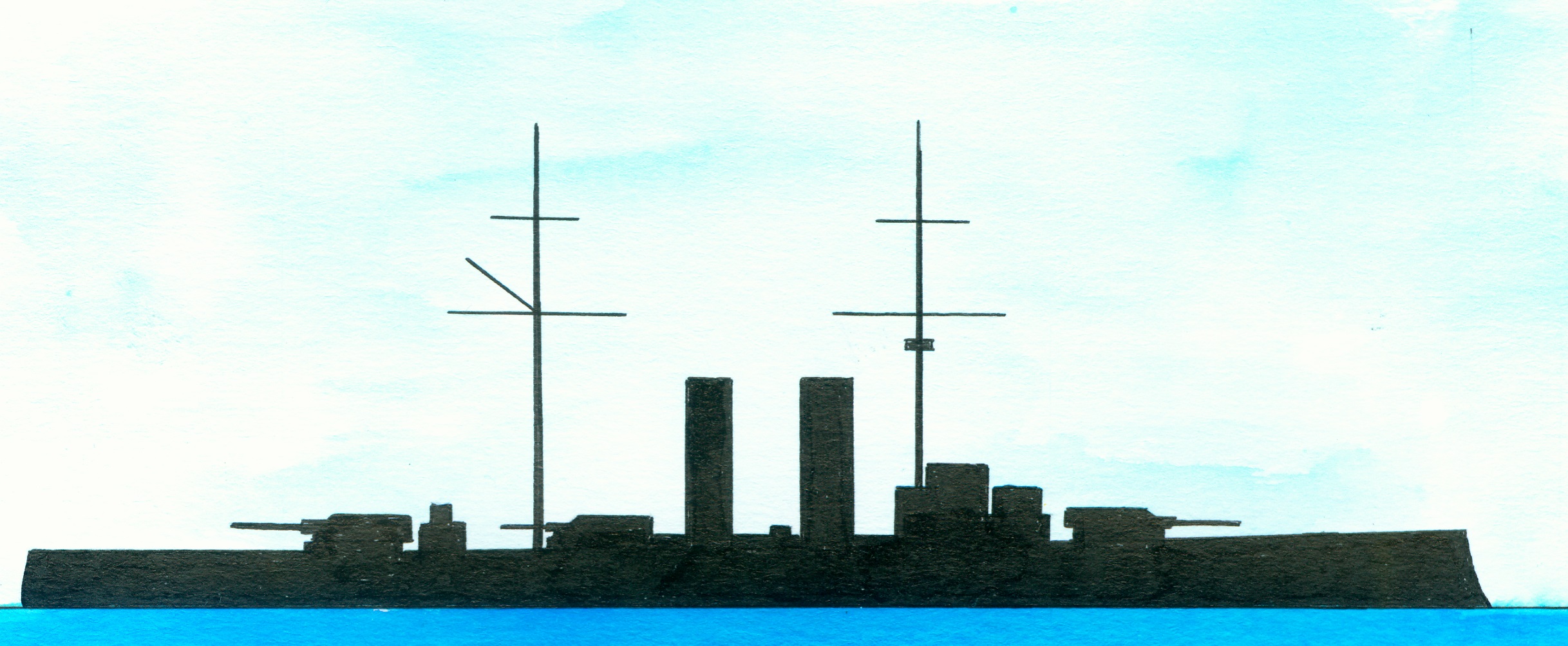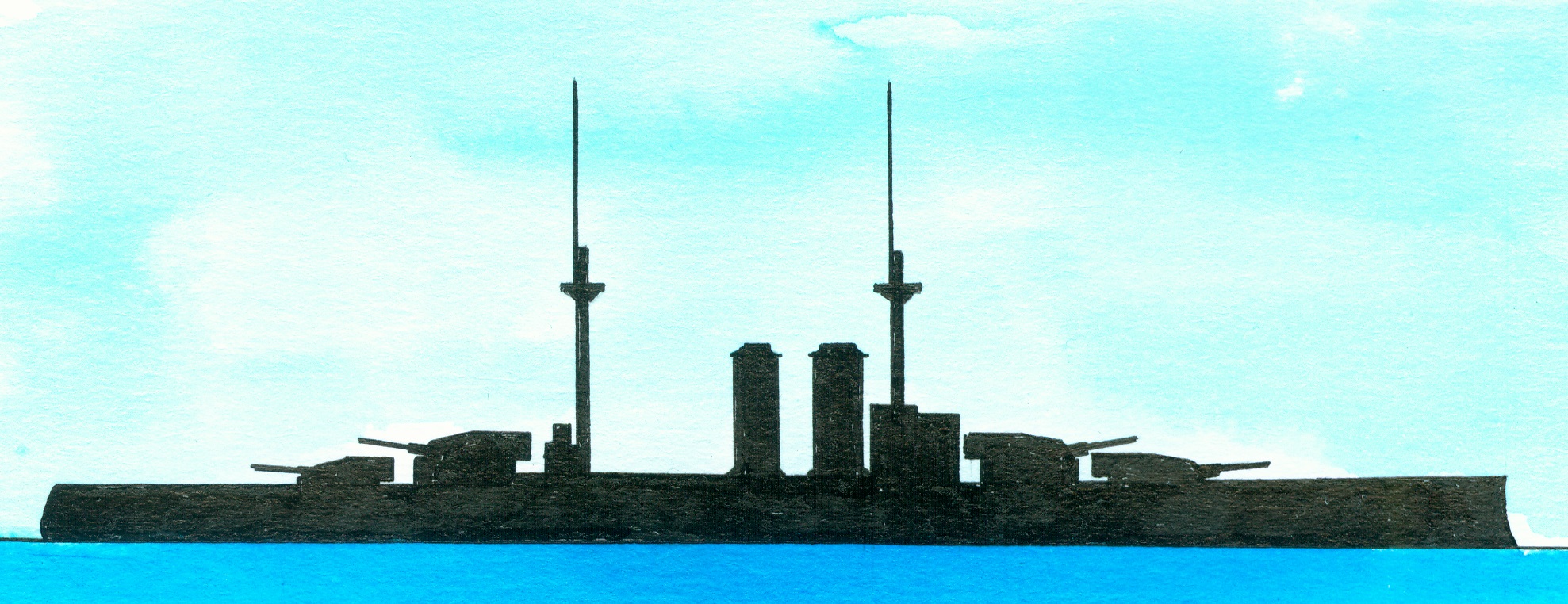Austrian-Hungarian Radetzky-class
Austrian-HungarianTegethoff-class
Italian Dante Alighieri
Part of the Tegethoff-class consisting of the Tegethoff, Viribus Unitis, Prinz Eugen and Szent István, preceded by the Radetzky-class and succeeded by the Ersatz Monarch-class. The Szente István differs from the other ships of her class, especially dealing with the machinery, a platform around the fore tunnel and modified ventilator trunk before the main mast. Designed/built as an answer on the Italian dreadnought Dante Alighieri.
Laid down at Ganz&Company Danibius shipyard, Fiume Hungary (nowadays Rijeka, Croatia) on 29 January 1912, launched by Archduchesse Maria Theresa of Austria on 17 January 1914, commissioned on 13 December 1915 and torpedoed by 2 Italian motor torpedo boats while she was returning from the Dalmatian coast on 10 June 1918. Wreck is found back mid-1970s off the Croatian island of Premuda and declared being an official war grave. Building costs around 60.600.000 crones.
Displacement 20.008 (standard)-21,689 (maximum) tons and as dimensions 152,20 x 27,30 x 8,90 metres or 449’4” x 89’7” x 29’2”. The machinery consisted of 2 AEG Curtis steam turbines and 12 Babcokc&Wilcox boilers supplying 26.400 allowing with 2 shafts a speed of 20 knots and with a speed of 10 knots with a coal bunker capacity of 2.000 tons a range of 4.200 nautical miles. Crew numbered 1.094 men.
Armament consisted of 4x3-30,5cm/12” 45cal K 10guns, 12x1-15cm/5.9” 50/cal K 10 guns in casemates, 18x1-7cm/3”/11pd 50 cal K 10guns,3x1-6,6cm K 10 anti aircraft guns and 4-53,3cm/21” submerged torpedo tubes (1xbow,2 x sides, 1 stern) for which 12 torpedoes were carried. Armour consisted of a 6-28cm/11” thick belt, 3cm/1.2-4,8cm/2” thick deck with the gun turrets and casemates protected by respectively 4,8cm/2”-28cm/11” and 4.7/18cm”.



